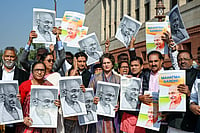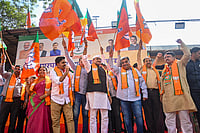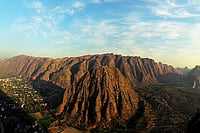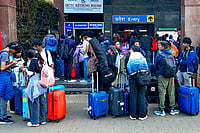‘Classical India’ and the ‘Golden Age of India’ are sobriquets once used for the Gupta era (300-600 AD), an age that produced outstanding literature, sculpture, architecture and so much else. It is not clear why Abraham Eraly’s new book brings more than a millennium within the ambit of ‘Classical India’. This makes the scope of The First Spring highly ambitious, including in it India’s sprawling landscape, polity and society, economy and everyday life, philosophy and literature, even arts and religion, across 1,300 years and more.
Unfortunately, this is compromised by unsubstantiated generalisations, by an ignorance of archaeology and the kind of information it has yielded on many of the issues examined here, and by a complete disregard for some segments of the India it claims to describe.
Anyone with a working knowledge of ancient India would be appalled, for instance, by the book’s characterisation of classical Indian civilisation as essentially Buddhist. Is this a reaction to what Eraly supposes to be a “common misconception that it was a Hindu civilisation”? He should know that such labels are no longer used to characterise Indian history and, certainly, the millennium he examines was neither Buddhist nor Hindu but one marked by multiple religious traditions. Mathura is one example where there were Buddhist, Jain, and Hindu practices besides the worship of fertility deities. Nagarjunakonda is another instance of religious heterogeneity, with over 30 Buddhist establishments, 19 Hindu temples and some medieval Jain places of worship.
Similarly, if Eraly had cared to look at the details of ordinary living that have emerged from excavations in the Gangetic plains, he’d find it difficult to believe that the Aryans “changed farming techniques” and introduced iron there. Rice began to be cultivated in the Gangetic alluvium in the 7th millennium BC and communities with broad-based farming patterns were flourishing there from the early 2nd millennium BC onwards. If the area did not have to wait for the putative Aryans for the consolidation of its agricultural base, neither did it require them for producing metallic iron, which was used there from the middle of the 2nd millennium BC itself.
Eraly’s description of cities also ignores archaeology, including the splendid ruins of urban Taxila, the most extensively excavated urban landscape of ancient India. Even when he describes Ujjain, he does not say anything about the town plan and building tradition that various seasons of digging has revealed.
These, though, are just the small things that Eraly so often forgets to mention. The most serious lacuna is that a big chunk of India, from Assam to Nagaland, is missing from the narrative. You wouldn’t know from the book that the epigraphs of the kings of Assam, for instance, have been extensively used to reconstruct the agricultural practices and the settlement pattern of the Brahmaputra valley or that there are Gupta type architectural remains near Tezpur. Nor would you learn about Tripura, not even about the presence of Buddhism there, otherwise so central to this book, as the relics of the Buddhist stupa at Shyam Sunder Tilla so dramatically reveal.
This is a book which aspires to have a reach. Alas, that aspirational reach exceeds its author’s intellectual grasp.


























